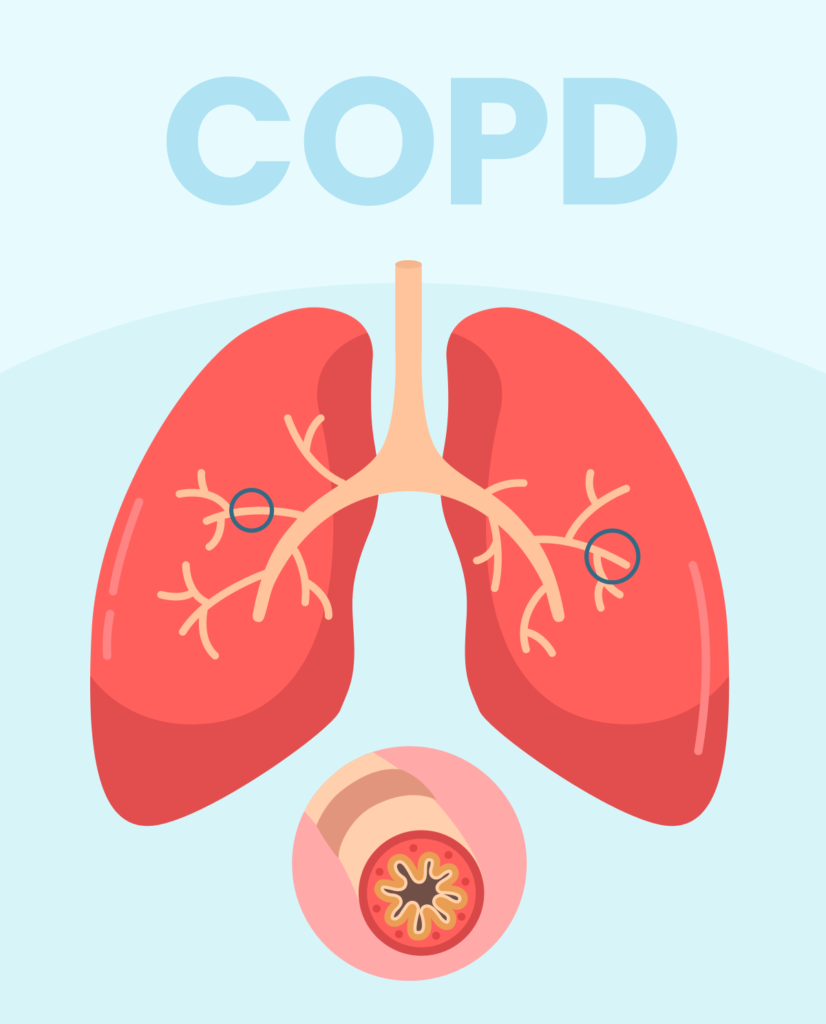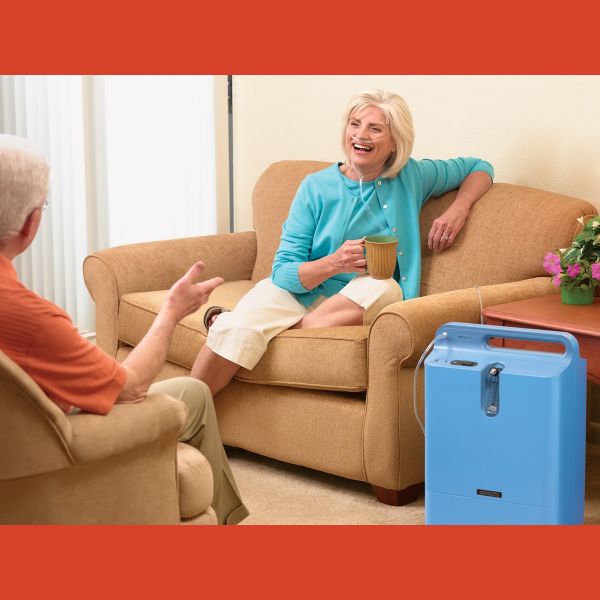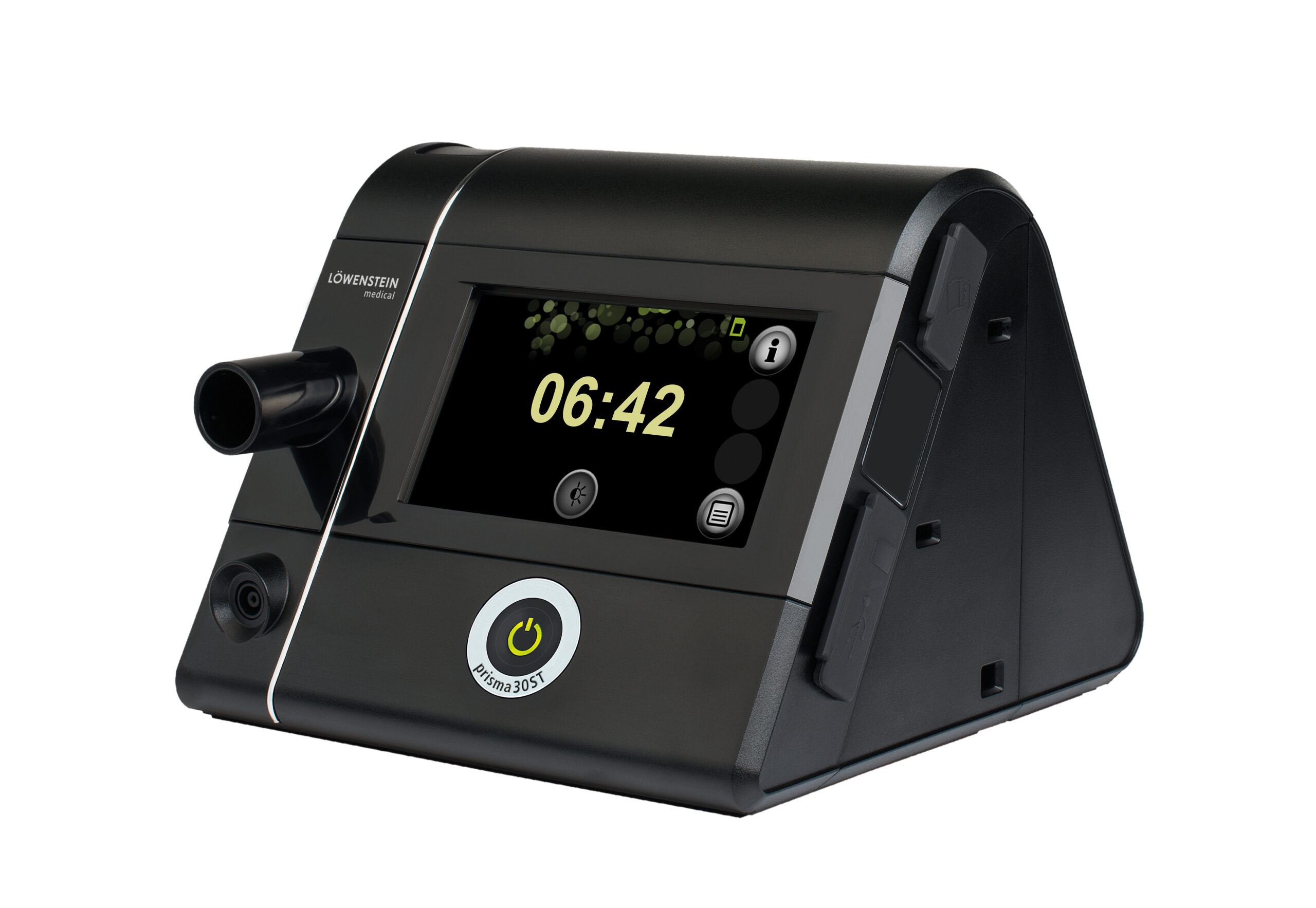Definition: COPD stands for Chronic Obstructive Pulmonary Disease. It includes a group of lung diseases that block airflow and make it difficult for the person to breathe. Emphysema and chronic Bronchitis are the most common conditions that cause COPD. Damage caused to the lungs from COPD is not reversible. COPD symptoms often don’t appear until significant lung damage has occurred, and the condition usually worsens over time, particularly if smoking exposure continues. Any long-term exposure to lung irritants like tobacco smoke or chemicals can damage your lungs and airways.

Signs and Symptoms:
Signs and symptoms of COPD may include:
1. Shortness of breath, especially during physical activities
2. Wheezing sound
3. Tightness in the chest
4. A chronic cough that may or may not produce mucus (sputum), mucus may be clear, white, yellow or greenish
5. Frequent respiratory infections to the upper or lower respiratory tract.
6. Low energy or fatigue 7. Unintended weight loss (in later stages)
8. Swelling in ankles, feet or legs.
9. People with COPD are also likely to experience episodes called exacerbations, during which their symptoms become worse than the usual day-to-day variation and last for several days.
Probable Causes:
Any long-term exposure to lung irritants can cause chronic obstructive pulmonary disease (COPD), which includes chronic Bronchitis and emphysema. Smoking and air pollution are the most common causes of COPD. Smoking is the leading cause of COPD. However, 1 in 4 people with COPD have never smoked. With the rising pollution levels due to the growing number of industries and cars on the road, air pollution across the globe has become a concern.
Air pollution refers to the contamination of air because of the presence of pollutants that can cause harm to the health of humans and other living beings. These pollutants damage your well-being by affecting your respiratory organs. As a result, they may put your lungs at risk and cause severe and irreversible harm in the form of chronic obstructive pulmonary disease (COPD) or asthma. Both indoor and outdoor pollutants can make the symptoms worse in the case of COPD patients and worsen their health. Long-time exposure to pollution is one of the risk factors associated with developing COPD. Poor-quality air can deteriorate lung health in patients already suffering from this condition. It can cause constant coughing and breathing problems and increase morbidity. Air pollution can also lead to respiratory infections, resulting in COPD attacks. People with COPD are at higher risk of other health problems. COPD is not curable, but symptoms can improve if one avoids smoking and exposure to air pollution, gets vaccines to prevent infections, and follows prescribed treatment plans.
Treatment:
If you are diagnosed with COPD, your healthcare provider will determine your treatment plan based on your symptoms and the severity of your COPD. However, the most important step you can take to help slow the progression of COPD is to quit smoking. Talk with your healthcare provider about programs and products that can help you quit smoking. Medicines that are often used in the treatment of COPD symptoms include bronchodilators and a combination of bronchodilators and steroids. Your healthcare provider may always prescribe an inhaler for you to carry. Inhalers allow the medicine to go straight to your lungs. Not all inhalers are used the same way. Ask your doctor to show you the correct way to use your inhaler.

Pulmonary rehabilitation is a more extensive, supervised program focusing on different health aspects. It includes exercise training, health education, and breathing techniques for people with certain lung conditions, lung problems due to other conditions, or a lung transplant. You may need oxygen therapy if you have a condition that causes your blood oxygen levels to be too low. Your doctor may talk to you about pulmonary rehabilitation to help you breathe easier and improve your quality of life. Oxygen therapy with an Oxygen Concentrator is a treatment that delivers extra oxygen to meet the demands of your body. Oxygen therapy includes tubes that sit at the opening of your nose, a face mask, or a tube placed in your trachea (windpipe) that delivers oxygen to your body. In BiPAP therapy, as with CPAP therapy, a machine helps you breathe while you sleep.

Simply put, a BiPAP and CPAP machine provides light air pressure that ensures your airways don’t close and interrupt your breathing as you sleep.The machine has a small motor that blows air into a tube that connects to a mask that covers your nose and mouth, or in some cases, just your nose. Doctors often use BiPAP and CPAP machines to treat obstructive sleep apnea (OSA) or central sleep apnea (CSA). However, some evidence shows it might help in treating certain types of COPD. However, scientists need more information to determine where and when it helps most. Factors like your overall health, other illnesses (comorbidities), and the type and stage of your COPD can affect the success of BiPAP or CPAP therapy. Even though some people have had success at home, doctors often recommend this therapy, especially at first, only in a hospital setting. This is because your doctors might need to look at the effects of the treatment on your blood oxygen and carbon dioxide levels in your blood and the use and strain on your breathing muscles. Suppose you use BiPAP therapy for the treatment of COPD at home after you leave the hospital. In that case, you may need to return to your healthcare provider regularly for new tests.
Conclusion:
COPD is a chronic condition; that is, it does not go away and often can worsen if not well taken care of. Therefore, it becomes imperative to treat the condition. However, considering your overall health and adopting a better lifestyle can help you maintain your symptoms.
